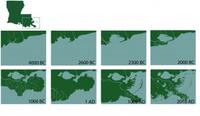-
Insurance industry needs support to address effects of climate change on the built environment
A new report finds that the increasing frequency of extreme weather brought on by climate change adversely affects real estate values and increases the probability of property damage occurring in urban areas. In the last ten years alone, direct losses in real estate and infrastructure as a result of natural disasters has tripled, reaching $150 billion per year. The report highlights the steps the insurance industry has taken to adopt risk standards for climate change across the industry, from catastrophe models and scenario analysis to insurance products that incentivize risk-reducing building practices.
-
-
CO2 warming effects already felt a decade after being emitted
It takes just ten years for a single emission of carbon dioxide (CO2) to have its maximum warming effects on the Earth. This is according to researchers who have dispelled a common misconception that the main warming effects from a CO2 emission will not be felt for several decades. This means that the benefits from emission reductions — the avoidance of extreme weather events such as droughts, heatwaves, and flooding — will be felt by those who have worked to curb the emissions and not just future generations. Some of the bigger climate impacts from warming, however, such as sea-level rise, melting ice sheets, and long-lasting damage to ecosystems, will have a much bigger time lag.
-
-
Research shows how global warming links to carbon emissions
A team of researchers from the Universities of Liverpool, Southampton, and Bristol have derived the first theoretical equation to demonstrate that global warming is a direct result of the build-up of carbon emissions since the late 1800s, when man-made carbon emissions began. The results are in accord with previous data from climate models. The results show every million-million tons of carbon emitted will generate one degree Celsius of global warming. They also show that the build-up of carbon emitted over the last 200 years will then last for many centuries to millennia even if carbon emissions are subsequently phased out.
-
-
Southeastern Louisiana has a problem: "The sea is rising and the land is sinking"

Southeastern Louisiana is drowning at the rate of one football field per hour, totaling up to sixteen square miles annually. In just eighty years, sea level rise, fossil fuel extraction, and having too few wetlands separating the Gulf from the flood protection levee systems have caused some 2,000 square miles of Louisiana’s coastal landscape to sink into the Gulf of Mexico. The issues facing Louisiana’s southeastern coast pose a threat to American energy and economic stability. A $50 billion, 50-year coastal restoration plan, formulated in 2007, is yet to be accepted and funded, but experts note that if sea-level rise is as bad as the worst case scenario, several projects at the heart of the restoration plan would become infective.
-
-
New York wants its own weather detection service
In the face of recent devastating snowfall in some regions, Governor Andrew Cuomo has announced that the state government will remain committed to its plans for the New York Advanced Weather Detective System, a state-run and focused weather service and alert system. Officials said that FEMA funding from the aftermath of Superstorm Sandy would pay for the new weather system, and that $15 million was approved in the state budget for 2014-15.
-
-
Court: San Diego infrastructure, mass transportation plans fail to meet climate tests
Two lawsuits by environmental groups including the Sierra Club, the Cleveland National Forest Foundation, and the Center for Biological Diversity, against the San Diego County government and the San Diego Association of Governments (SANDAG) could force the region to rethink how it plans to spend billions of dollars in the next few decades on infrastructure and mass transportation projects.
-
-
Reducing the impact of extreme weather
How do we reduce the impact of extreme weather today while preparing ourselves for future changes? What can we do to build our resilience? A new report from the Royal Society investigates these, and other, key questions to help inform important decisions about adaptation and risk reduction that are being made at global, national and local levels.
-
-
New report highlights “significant and increasing” risks from extreme weather

A comprehensive new report, published by the Royal Society, indicates that exposure of human populations to extreme weather is set to increase as global climate and population size, location, and age continue to change. The report focuses on the risks to people from floods, droughts, and heatwaves. These are some of the most frequent and damaging extreme events that currently occur and their impacts will change with the changing climate. The report also calls for changes to global financial accounting and regulation to ensure that extreme weather risk is made explicit. At present, these risks are not systematically factored into investors’ valuations or assessed by creditors.
-
-
USGS awards $2 million grant to Center for Earthquake Research and Information
The U.S. Geological Survey has awarded the Center for Earthquake Research and Information (CERI) at the University of Memphis $2 million over the next three years to continue monitoring earthquakes in the central and southeastern United States. The CERI seismic network includes 140 seismographs in nine states. It integrates data in real-time from an additional 160 stations to process about forty gigabytes of data each day and processes information from about 500 earthquakes each year.
-
-
Impasse in Congress over terrorism insurance (TRIA) renewal

The Terrorism Risk Insurance Act(TRIA) is expected to expire by 31 December unless Congress renews the legislation or places a temporary extension. The legislation, initially established in November 2002 as a federal backstop to protect insurers in the event an act of terrorism results in losses above $100 million, has been extended and reauthorized. The insurance industry supports the reauthorization approved by the Senate, and opposes a short-term extension. Some insurance companies have noted on their contracts that policyholders could lose terrorism coverage if TRIA is not renewed.
-
-
California’s early-warning ShakeAlert system to be rolled out next year
Officials in California expect the state’s ShakeAlertsystem to be available to some schools, fire stations, and more private companies early next year. Until now, only earthquake researchers, some government agencies, and a few private firms have received alerts from the statewide earthquake early warning system. The 2015 expansion will occur as long as Congress approves a $5 million funding request that has passed committees in both the Senate and House. A full vote on the budget was delayed until after the midterm elections.
-
-
Resilience of California’s transportation infrastructure questioned
A significant number of bridges and elevated roadways lie above or close to active fault lines, and Californians often wonder how the state’s towering interchanges and freeway network would perform during a major earthquake.The California Department of Transportation (Caltrans) has spent over $13 billion in the last forty years to reinforce vulnerable bridges and interchanges. Caltrans officials note that during a major earthquake, freeways are likely to sustain significant damage, but engineers feel confident that freeways will not collapse.
-
-
Global warming skeptics unmoved by extreme weather
What will it take to convince skeptics of global warming that the phenomenon is real? Surely, many scientists believe, enough droughts, floods, and heat waves will begin to change minds. A new study throws cold water on that theory. Winter 2012 was the fourth warmest winter in the United States dating back to at least 1895. Researchers found, however, that when it came to attributing the abnormally warm weather to global warming, respondents largely held fast to their existing beliefs and were not influenced by actual temperatures. This study and past research shows that political party identification plays a significant role in determining global warming beliefs. People who identify as Republican tend to doubt the existence of global warming, while Democrats generally believe in it.
-
-
New light shed on reactor fuel behavior during severe nuclear reactor accidents
UO2 is the primary fuel component in the majority of existing nuclear reactors, but little is known about the molten state because of its extremely high melting point. Until now, the extremely high temperature and chemical reactivity of the melt have hindered studies of molten UO2. This lack of fundamental information has made it difficult to evaluate issues associated with the interaction of molten UO2 with a reactor’s zirconium cladding and steel containment vessel. A new discovery about the atomic structure of uranium dioxide will help scientists select the best computational model to simulate severe nuclear reactor accidents.
-
-
Architecture of doom: DIY planning for global catastrophe
A thriving industry has grown up around planning for apocalypse, with the design and equipping of the ideal home as a key element. Discussion of survival retreat design focuses on issues such as strategic location, energy self-sufficiency, water supply, waste treatment, food production, and home security. Survivalists can easily be caricatured as lonely lunatics sitting on piles of freeze-dried food and exotic armaments in their foil-lined bunkers. Researchers say, however, that survivalism is rarely about extremist action. Rather, it is more often about tinkering with tools, exchanging ideas, and creative storytelling. We can see the design of the survival retreat as a wilder version of the more familiar impulse towards DIY and home renovation. Survivalists use these projects as a focus for developing the personal skills, knowledge, and praxis needed to embrace a radically changing world. Potential chaos and crisis are embraced as the opportunity for developing personal autonomy. Seen in this way, the survival retreat starts to seem to be an eccentric but understandable reaction. The challenge survivalism poses is thus not extremism. Survivalists tend to privilege privatized, self-regulated, individualist modes of living – but exit from the grid challenges the collective infrastructures that have been so vital to more equitable urban environments. What, then, of our public networks such as water, electricity, transport, and telecommunications? What of our common urban future?
-
More headlines
The long view
Using Drone Swarms to Fight Forest Fires
Forest fires are becoming increasingly catastrophic across the world, accelerated by climate change. Researchers are using multiple swarms of drones to tackle natural disasters like forest fires.
How Climate Change Will Affect Conflict and U.S. Military Operations
“People talk about climate change as a threat multiplier,” said Karen Sudkamp, an associate director of the Infrastructure, Immigration, and Security Operations Program within the RAND Homeland Security Research Division. “But at what point do we need to start talking about the threat multiplier actually becoming a significant threat all its own?”
